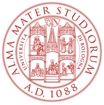IS1819 - Course Material
Lectures
Lecure slides will be published as the course progresses:
- Course introduction [pdf]
- Planning [pdf]
- Graph-based planning [pdf]
- Swarm Intelligence [pdf]
- Planning for robots [pdf]
- Introduction to Machine Learning [pdf]
- Machine Learning [pdf]
- Inductive Logic Programming [pdf]
- Bayesian Learning [pdf]
- Neural Networks [pdf]
- Deep Learning [pdf]
- Constraint Programing [pdf]
Lab sessions
Slides and data files will be published as the course progresses
- Automated planning
- Agent Based Models
- Decision Trees
- Slides & start-kit [zip]
- Constraint Programming
- Start-kit [zip]
Seminars
Exploiting Synchronized Lyrics And Vocal Features For Music Emotion Detection
Loreto Parisi, Musixmatch (Data Intelligence and Platform)
- slides [pdf]
One of the key points in music recommendation is authoring engaging playlists according to sentiment and emotions. While previous works were mostly based on audio for music discovery and playlists generation, we take advantage of our synchronized lyrics dataset to combine text representations and music features in a novel way; we therefore introduce the Synchronized Lyrics Emotion Dataset. Unlike other approaches that randomly exploited the audio samples and the whole text, our data is split according to the temporal information provided by the synchronization between lyrics and audio. This work shows a comparison between text-based and audio-based deep learning classification models using different techniques from Natural Language Processing and Music Information Retrieval domains. From the experiments on audio we conclude that using vocals only, instead of the whole audio data improves the overall performances of the audio classifier. In the lyrics experiments we exploit the state-of-the-art word representations applied to the main Deep Learning architectures available in literature. In our benchmarks the results show how the Bilinear LSTM classifier with Attention based on fastText word embedding performs better than the CNN applied on audio.
Natural Language Processing and Learning (Apr 12)
Andrea Galassi, University of Bologna
Natural Language Processing (NLP) is an interdisciplinary field of study that merges different fields, such as artificial intelligence and linguistics, with the aims to analyze, represent, understand, re-create the natural language, in a similar fashion to what human beings do. Possible applications are Machine Translation, Query Answering, and Sentiment Analysis.
The seminar will provide an overview of the tasks addressed in NLP, describe some of the many features that can be extracted from textual documents (linguistical, statistical, sub-symbolic...), and examine case studies of machine learning application to NLP-related tasks.
Intelligent Systems in action: HPC and Transprecision Computing (May 3)
Andrea Borghesi, University of Bologna
Modern High Performance Computing systems are large machines that present various and unique challenges, for instance their large power consumption and multiple components that can break.
In recent years AI approaches have been proposed to cope with these issues, ranging from proactive and power-aware job schedulers to automated techniques to detect anomalous states of the computing units. These methods combine Machine Learning and optimization algorithm to inject intelligence in the management process of supercomputers.
Transprecision computing is is a computing paradigm that aims at exchanging the accuracy of the result of a computation and its associated energy cost; for example, if we consider a computation between floating-point operands, reducing the number of bits used to represent the variables can lead to smaller memory occupation and movement, thus reduced energy consumption. Recently, transprecision computing has been targeted by several AI-based efforts, at the junction of optimization techniques (i.e. Integer Linear Programming) and Deep Learning.
Reference Books
About AI in general:
- S. J. Russel, P. Norvig: "Artificial Intelligence: A Modern Approach", Prentice Hall International, Pearson Education Italia, 2005.
- E. Rich, K. Knight: "Intelligenza Artificiale", McGraw Hill, Seconda Edizione 1992.
- E. Charniak, D. McDermott, "Introduzione all'Intelligenza Artificiale", Masson, 1988.
- M.Ginsberg: "Essentials of Artificial Intelligence", Morgan Kaufman, 1993.
- P. H. Winston: "Artificial Intelligence: Third Edition", Addison-Wesley, 1992.
Prolog:
- L.Console, E.Lamma, P.Mello, M.Milano: "Programmazione Logica e Prolog", Seconda Edizione UTET, 1997 [web page for the book (in Italian)]
- I. Bratko: "Programmare in Prolog per l'Intelligenza Artificiale", Masson e Addison-Weslay, 1988.
Additional books:
- Ian Witten, Eibe Frank: "Data Mining: Practical Machine Learning Tools and Techniques with Java Implementations", ISBN: 1-55860-552-5, Morgan Kaufmann Publishers, 2000.
Scientific Papers
Articoli scietifici relativi ai contenuti del corso verranno pubblicati con l'avanzare del programma.
Planning
- Life-long planning A* [paper]
- Partial Order Planners:
- UCPOP Planner [home page] [paper]
- RePOP Planner [home page] [paper]
- VHPOP Planner [home page] [paper]
- Graph based planning:
- Graphplan planner [home page] [paper]
- Blackbox planner (planning as satisfiability) [home page] [paper]
- FF planner (graphplan as a heuristic) [home page] [paper]
- Contingency Planning:
Swarm Intelligence:
- Ant Colony Optimization:
- Artificial Bee Colony [paper 1] [paper 2]
- Particle Swarm Optimization [paper]
Neural Networks:
Constraint Programming:
